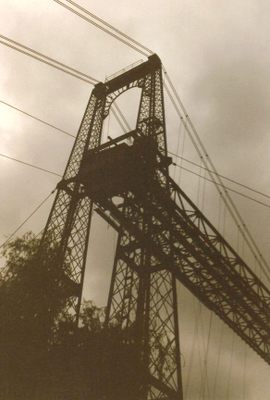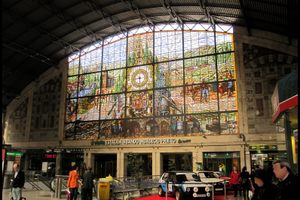About
The objective of Vizcaya Bridge began simply enough: link inhabited riverbanks without disturbing the shipping traffic navigating its waterways. But when this planning is all transpiring in the late 19th century and involves the royal throne, plans have a way of escalating.
Locals living along the Nervion River in the conjoined summer resorts of Las Arenas and Portugalete have taken to calling the Vizcaya Bridge "Puente Colgante," the hanging or suspension bridge. Lest spectators be fooled from a distance, this is no ordinary suspension bridge even though it may appear so.
Designed in 1893 by Basque architect Alberto de Palacio, the same man responsible for the Crystal Palace in Madrid's Parque Retiro, the Vizcaya Bridge's planning was meticulously thought-out. Not only did it ensure that the period's tall ship traffic could pass uninhibited beneath its 200-foot-tall arches, but the 538-foot long bridge itself was designed to transport passengers and cargo in its own right. A gondola system still in use to this day was devised to ferry humans and vehicles together, suspended above the waterway, across to the other side.
Since its opening in 1893, every day, each eight minutes, all day and night, a gondola suspended beneath the bridge's upper walkway carries up to six vehicles and dozens of passengers from one bank of the Nervion to the other. With over a century of use under its belt, Vizcaya Bridge only experienced a single lapse into disuse; during the Spanish Civil War, dynamite was detonated on the bridge's upper deck, and it took four years before the damage could be repaired, returning the beloved bridge to serviceable condition.
In 2006, this truly remarkable piece of engineering was recognized by UNESCO, adding an extra degree of security that this rare, mutant bridge that genuinely has managed to do it all will continue to delight and service its passengers for centuries to come.
Related Tags
Community Contributors
Added By
Published
May 3, 2015






































